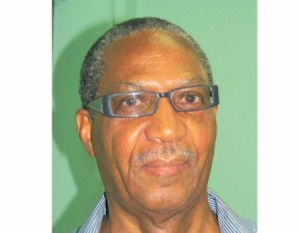BASSETERRE, ST. KITTS, JULY 25TH 2014 (CUOPM) – St. Kitts and Nevis is among several Caribbean countries that registered an increase in Foreign Direct Investment (FDI) in 2013.

Former Caribbean Development Bank (CDB) President, Dr. Compton Bourne
Former Caribbean Development Bank (CDB) President, Dr. Compton Bourne said FDI inflows also increased in Jamaica, Antigua and Barbuda, The Bahamas, Grenada, St. Lucia, St. Vincent and the Grenadines and Haiti in 2013.
Dr. Bourne, who is now executive director of the Caribbean Centre for Money and Finance (CCMF) said the recent fluctuating inflow of foreign direct investment (FDI) is something Barbados and other Caribbean countries should keep an eye on.
“FDI inflows are quite substantial relative to the economic size of CARICOM countries,” said Dr. Bourne, who was reflecting on the publication of the World Investment Report 2014 by the United Nations Conference on Trade and Development, who added that it provided “a welcome opportunity to examine the recent experience of Caricom countries with foreign direct investment.”
“Between 2008 and 2013, the regional group of countries received foreign direct investment totalling US$25.7 billion. The annual average was US$4.3 billion,” he pointed out.
“Major recipients of FDI inflows are Trinidad and Tobago with US$6.65 billion, that is, 25.5 per cent of the cumulative total, The Bahamas with US$6.25 billion or 24.3 per cent, Jamaica with US$3.48 billion (13.5 per cent) and Barbados with US$2.62 billion (10.2 per cent).
“The other ten countries together received US$6.85 billion (26.5 per cent) of the cumulative total, with Guyana accounting for 4.7 per cent and nine others having no more than three per cent each.”
Dr. Bourne said these annual inflows “have tended not to be stable,” and that “while 2008 was a good year for all except Haiti, inflows were considerably smaller in 2009, except for The Bahamas and Haiti where there were sizeable increases.”
“Reductions in FDI inflows persisted in 2010 and 2011 in Jamaica, Belize, Dominica, Grenada St. Kitts and Nevis, St. Lucia and St. Vincent and the Grenadines and in 2012 in Grenada, St. Kitts and Nevis and St. Lucia. Guyana attracted larger inflows in 2010, 2011 and 2012; Trinidad and Tobago did so in 2011 and 2012; The Bahamas in 2010 and 2011 but not in 2012; and Haiti in 2010 and 2012,” he said.
“FDI inflows increased in Jamaica, Antigua and Barbuda, The Bahamas, Grenada, St. Kitts and Nevis, St. Lucia, St. Vincent and the Grenadines and Haiti in 2013 but decreased in Guyana, Belize, Trinidad and Tobago, Barbados and Dominica.”
Bourne said a major part of the reason such investment was vial was because it was “quite substantial relative to the economic size of CARICOM countries”.
“FDI inflows for 2012 expressed as percentages of gross domestic product in the same year were between 12.2 per cent and 16.4 per cent in Antigua and Barbuda, Barbados, Belize, and the Bahamas, and between 6.7 per cent and 11.7 per cent in St. Lucia, Trinidad and Tobago, Guyana and St. Kitts and Nevis. The smallest percentages were in Suriname (1.2 per cent), Haiti (two per cent), Jamaica (3.3 per cent) and Grenada (4.2 per cent).”
